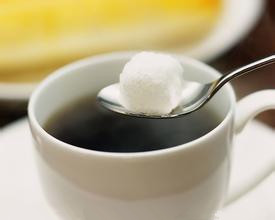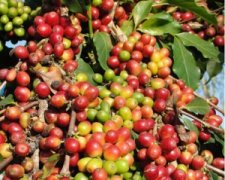Treatment of Coffee fruits Coffee bean treatment

I would like to introduce the treatment of coffee fruits and the comparison of different ways.
The following picture shows an enlarged coffee bean with pectin, in which pectin, parchment, silver skin and raw beans are clearly distinguished.
Processing mode classification Processing Method
According to whether the peel is removed or not, the treatment of coffee fruit can be divided into two ways: dry (Dry Processing) and wet (Wet Processing). Then according to the different treatment of pectin, and divided into more fine honey treatment, semi-washing and so on.
Dry treatment Dry Processing
Dry treatment is the most primitive treatment method; compared with wet treatment (water washing method), it needs less equipment, water source and manpower, and the treatment method is relatively simple. Covers the following different ways:
Sun-Dried / Natural sun exposure
Pulped Natural / Honey (Miel) honey treatment
Sun-Dried or Natural full sun exposure
Sun drying, as the name implies, means that coffee fruits are completely dried by the sun.
A good day includes: the way to sun should be
Wind-selected Winnowing removes light impurities, such as branches, leaves, grass, etc.
Screen Sifting to remove impurities that are heavier or bigger than coffee fruit, such as stones, soil clods, etc.
Flotation Flotation further removes impurities and overripe or even dried coffee fruits according to specific gravity.
What we actually saw in Ethiopia was that after the coffee fruit was picked, it did not go through flotation, but was spread directly to the drying bed, and then workers went to inspect it to remove the overripe or immature coffee fruit before the coffee fruit was dried and blackened. And the remaining impurities (branches and leaves, etc.).
The pulp of Pulped Natural is dried naturally
A method of treatment originated in Brazil (1991), some people call it Semi-washed, which is classified as semi-washing, but the editor prefers Semi-Dried (because the coffee fruit is sun-dried without peel and flesh, and does not enter the later washing process).
Practice: remove the peel and pulp by machine and retain pectin for sun drying. The reason for this is to make up for the lack of effective grading and screening of coffee fruits with different maturity in the sun, which affects the quality of the final coffee beans.
Honey (Miel) Processing honey treatment
Honey treatment, which originated in Costa Rica in Central America (2003), is currently the most widely used in Central America. At first, it was to meet the needs of illy and Japanese customers, in order to find a producing country other than Brazil to expand.
The source of Pulped Natural treatment; later, as a result of new water regulations, more and more growers have been forced to turn to this relatively less water-intensive treatment. Its treatment method is basically the same as that of Pulped Natural, except that it is divided according to the proportion of retained pectin and the drying method:
White Honey honey 80% mae 90% pectin was removed.
Yellow Honey yellow honey retains 50% pectin and has no fermentation.
Red Honey red honey basically retains all pectin and has no fermentation.
Black Honey black honey basically retains all pectin and dries at a slightly higher temperature at low altitude. It is covered with slight fermentation in the first 24 hours, and then the drying process is transferred to an African drying bed for drying.
Gold Honey Jinmi basically retains all pectin, drying at low temperature at high altitude and prolonging the drying time.
In individual estates, the treatment of individual batches will be different.
Wet treatment of Wet Processing
It is divided into two types: semi-washed Semi-Wash and full-washed Full-wash.
The final product of both methods is: raw coffee beans with parchment.
Main difference: remove pectin directly by machine or through fermentation tank to remove pectin layer.
Semi-washed: after peeling and pulping, the coffee fruit does not go through the fermentation tank, but through a special pectin removal machine to remove pectin.
Full water washing: after removing the peel and pulp of the coffee fruit, enter the fermentation tank and remove the pectin layer after 1-2 days of fermentation (the time varies according to the temperature and humidity of the site). There are different ways of enzyme and no enzyme.
Wet-Hulling wet planer
Wet planing (Giling Basah) is a unique water washing system in Indonesia. Its way is to remove the peel and pulp first, then dry it with pectin, and then remove the parchment directly through the machine until the moisture content is about 40.
Comparison of Comparison of Processing Method with different processing methods
Impact on the environment
Effect on flavor
I hope that through the introduction of the editor, we can understand that each treatment method has its own applicable conditions, including natural factors, manpower, material resources, etc.; as long as each method is properly controlled, it can deal with high-quality coffee raw beans with its own characteristics and flavor quality.
Important Notice :
前街咖啡 FrontStreet Coffee has moved to new addredd:
FrontStreet Coffee Address: 315,Donghua East Road,GuangZhou
Tel:020 38364473
- Prev

What are the processing procedures for raw coffee beans? Coffee bean treatment
With the growing culture of cafes, many people have fallen in love with coffee, but most coffee consumers do not know how coffee has changed from a tree to a drinkable coffee. Chongqing Brista Coffee West Point training Institute will take you to meet it now. 1. The fresh fruit of the mature coffee on the tree can be picked at this time, and picking coffee is not an easy task.
- Next

Milk foam making and Coffee pattern drawing skills of Italian Coffee
Today, I will share with you how to make a beautiful and delicious cup of lace coffee. Preparation work the preparation work of making pull flower coffee is extremely important. You must ensure that the following points are foolproof: 1. Make sure the steam rod is clean; 2. Make sure the milk is fresh enough and the temperature is 4-7 ℃. The lower the temperature of the milk, the better, but don't freeze. Prepare a thermometer. milk
Related
- What is the meaning of lactic acid fermentation with coffee bean treatment?
- How to judge the state of foam by sound?
- How does the latte pull out the unicorn pattern? Come to get for a little trick to improve the flower pull!
- Will flower pulling affect the taste of the latte?
- Do you know the history of coffee?
- The difference between honey treatment and sun washing what is raisin honey treatment?
- What kind of milk can a novice use to make coffee foam to keep the foam longer? The correct method and skills of milking tutorial sharing
- Why do washed coffee beans taste sour? Flavor characteristics of washed Coffee
- Introduction to the skill of how to practice the size and height of water injection around the circle of hand-brewed coffee
- How do beginners practice coffee flower drawing from scratch?

